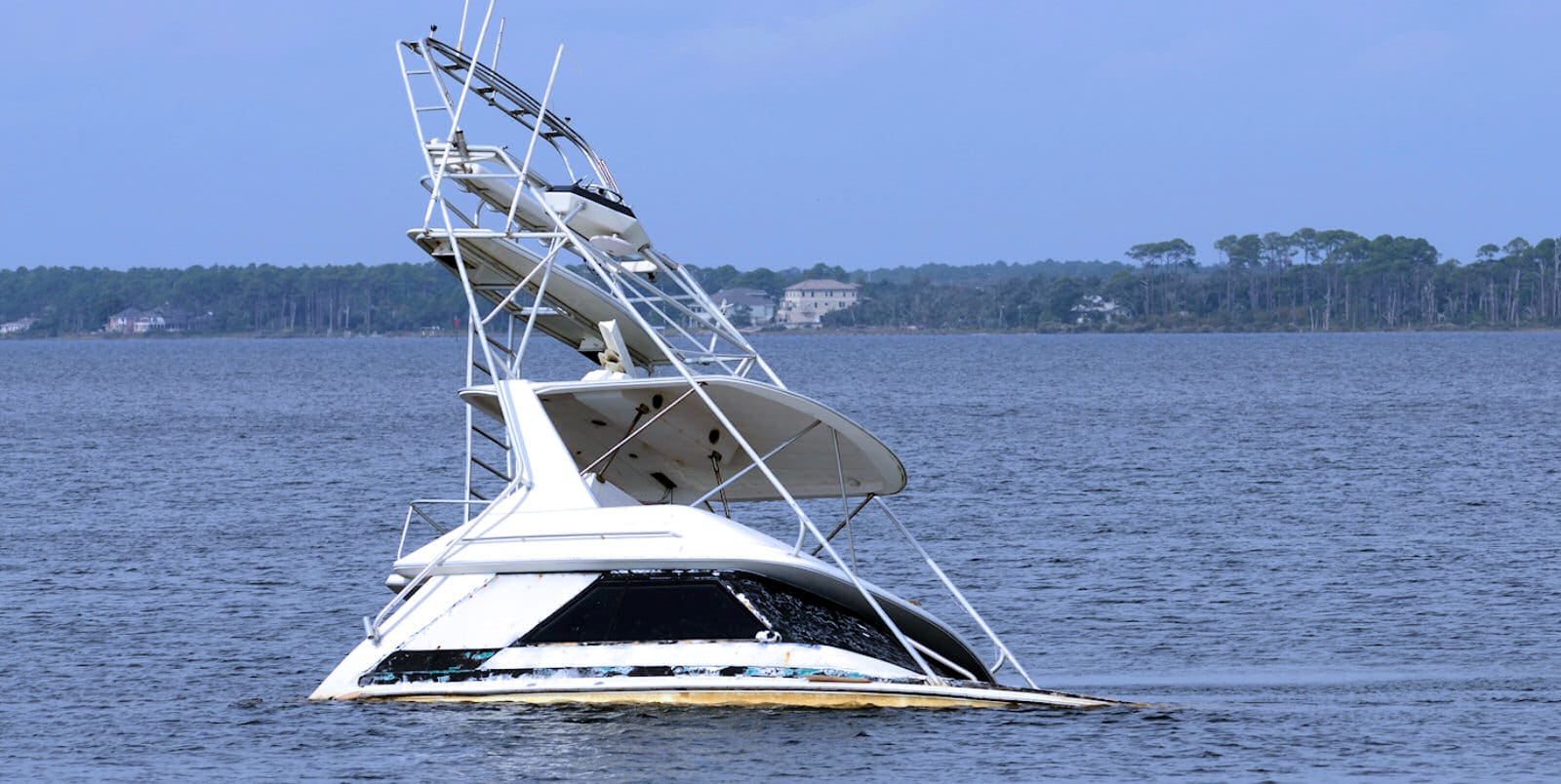Saturday, July 3, 1999. The “Random Harvest”, a 33-foot GRP charter boat, departs from her home port of Brighton with a crew of 2 and 6 guests for a fishing trip. 4 nautical miles later, the skipper hears the shrill sound of the bilge alarm.
He opens the engine compartment and discovers a massive ingress of water. The bilge pumps are switched on. But they are unable to cope with the situation. Only after he disconnects the cooling water intake hose from the engine and uses its seawater pump does the situation stabilize enough for them to make it back to the marina with difficulty.
A few days later, experts from the Marine Accident Investigation Branch identified the broken toilet flush valve as the causal cause.
Cause: Dezincification of an onboard culvert
But how could it fail so suddenly? Well… the answer can be found in the good old electrochemical voltage series, which many of us had (more or less close) contact with in physics lessons back in the day. So let’s turn back the clock a little. Quiet in the classroom, please!
Depending on the type or alloy, metals have different residual electric potentials, which are essentially determined by the number of (negatively charged) electrons buzzing around their atomic nuclei. If these are relatively few, the residual stress potential is also low. We speak of a “noble” or “cathodic” metal.
However, if there are comparatively many electrons around the atomic nucleus, there is also a high residual stress potential. We now speak of a “base” or “anodic” metal.

“Precious and base metals”
The electrochemical voltage series (extract)
As can be seen from the table above, bronze, for example, would be classified as a cathodic metal, while magnesium would be classified as anodic.
But what does all of this have to do with a broken air diffuser, one might now raise doubts in the direction of the teacher’s desk? And as long as everyone is sitting on dry land, the above findings would only be moderately relevant. However, the situation is completely different when water is added (as is not uncommon with boats). Water (especially salt water) is electrically conductive – a so-called electrolyte.
And if we now place two metals with very different intrinsic potentials in an electrolyte and connect them using a conductor, then the electrons celebrate Kirtag.
For them, this is like ringing the bell after physics class. This is because electrons are impetuous creatures and as soon as you prepare a path for them, they tend to run away.
And just as we humans tend to distance ourselves from close mass accumulations, electrons also tend to push away from densely populated atomic nuclei towards less populated ones. So away from the anode, towards the cathode, to use a bit of technical vocabulary again.
We will save the details of the processes involved for the next class. But we can already assume that such a migration of electrons also leaves its mark. Especially at the anode, because it is the anode that loses electrons – in other words, it “sacrifices” them to the cathode.
And it was precisely this phenomenon that doomed “Random Harvest” on that fateful day. Let’s apply the knowledge we have gathered so far to understand what happened:
We remember: the water ingress was the result of a broken flush valve for the toilet flush. This outlet was made of 60/40 brass, i.e. an alloy of 60% copper and 40% zinc by weight.
From our table above, we can see that zinc is a highly anodic metal with a potential of -1100 mV. It therefore has a strong tendency to release electrons in the direction of cathodic (or more noble) metals as soon as they are together in an electrolyte (seawater).
On the “Random Harvest”, for example, this would be the stainless steel propeller shaft (-550mV) or other underwater fittings made of bronze (-280mV). The toilet’s onboard passage gradually lost the zinc content in its alloy, which eventually made it brittle and led to breakage. Metallurgists refer to this process as “dezincification”.

“Dezincification” – misfortune comes on quiet paws
A water spoon with advanced dezincification. You can imagine how long this boat would have been on the water…
Galvanic and electrolytic corrosion
The cause of Random Harvest’s near-disaster was therefore the result of galvanic corrosion.
The investigators concluded that it was highly likely that faulty electrical installations on board had also accelerated the rate of corrosion.
This can happen, for example, if cables in the bilge area are not carefully insulated and thus ensure a constant supply of electrons. The higher the voltage of such “leakage currents”, the stronger the decay process at the anode. This can have fatal consequences, especially with direct current.
If such an external current source is involved in the corrosion process, this is also referred to as “electrolytic corrosion”.
Teil 2: Der richtige Kathodische Schutz – eine Lebensversicherung für Ihr Boot
